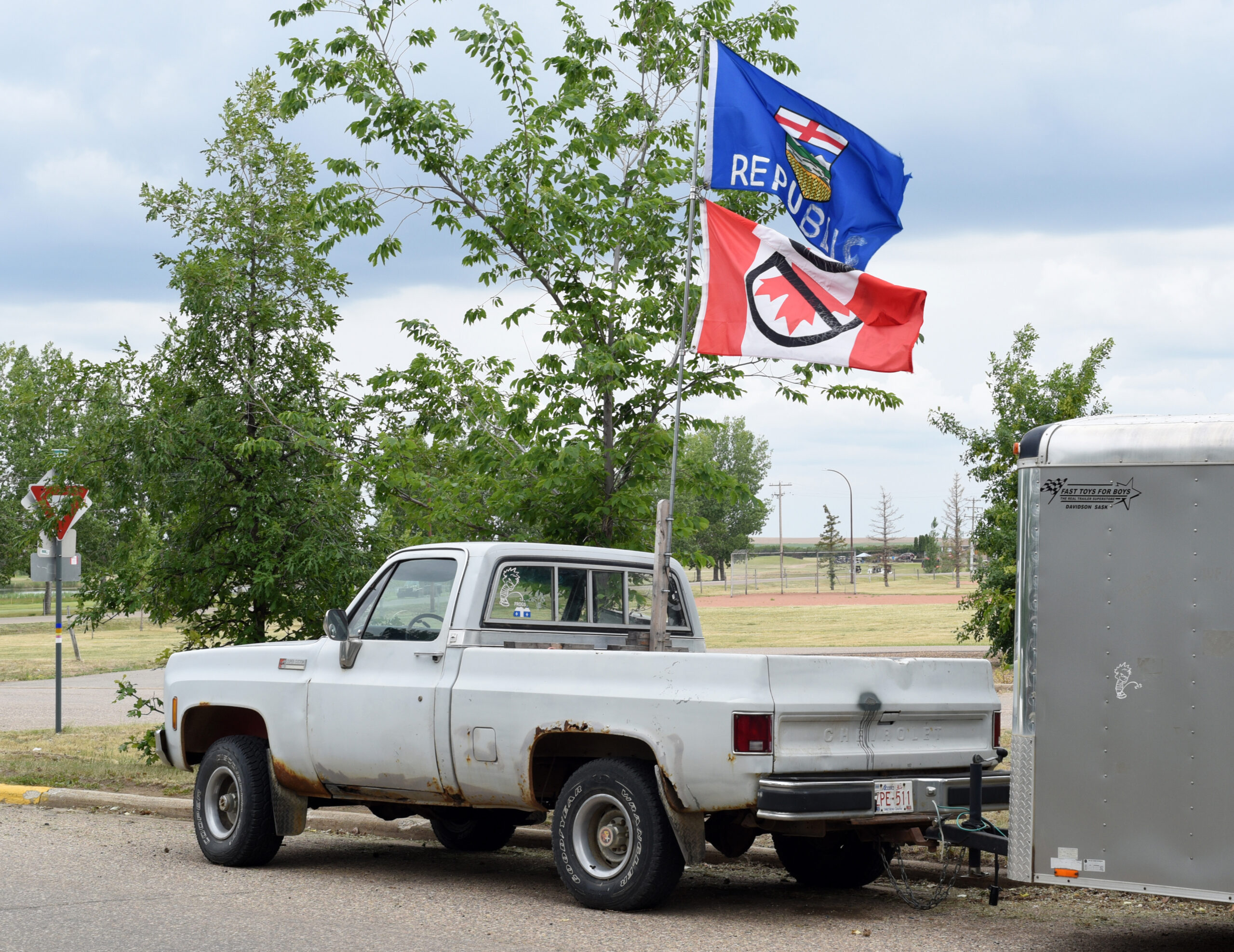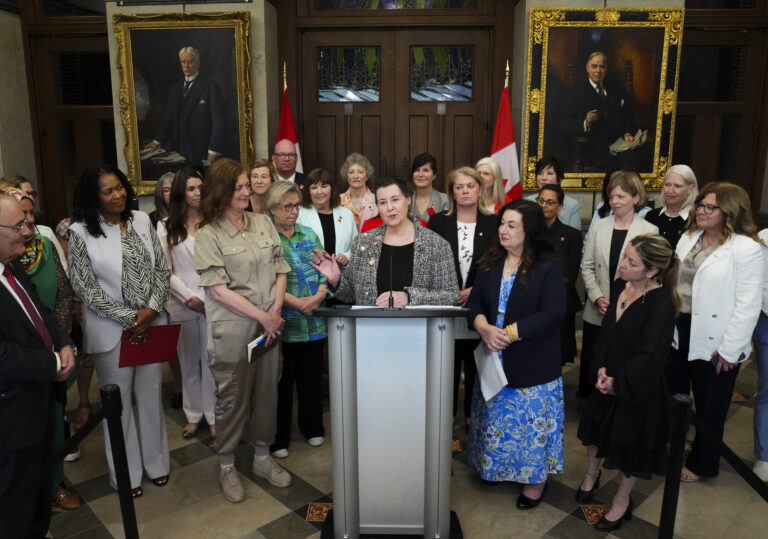(Version française disponible ici.)
Thirty years after Quebec’s second referendum on independence, and despite the resurgence in popularity of the Parti Québécois (PQ), the main challenge to the Canadian federation’s efforts to maintain cohesion and unity seems to be coming from Alberta.
Indeed, Danielle Smith’s United Conservative government, elected in 2022, has been vocal in its criticism of successive Liberal federal governments led by Justin Trudeau and, more recently, Mark Carney. In addition, it has deliberately relaxed the rules to make it much easier to hold a referendum.
This change came at a time when the Alberta independence movement, although still relatively weak (no political party represented in the legislature supports it), is being talked about more than ever. The Alberta government openly acknowledges that it has found inspiration in Quebec for its approach.
However, this inspiration does not make Alberta’s independence any more likely. Much more so than in Quebec, the secession project in Alberta faces very significant obstacles.
Quebec as a model for autonomy
Before discussing these obstacles, it is important to highlight the explicit link that exists in Alberta between the referendum issue and the Quebec experience. This link refers more generally to the importance of Quebec in debates about Alberta’s future.
In Alberta, as elsewhere in the country, Quebec is considered a “model” for provincial autonomy and political and territorial affirmation. This image is linked in particular to the public policies adopted in Quebec since the Quiet Revolution.
More generally, Quebec is perceived as being at the forefront of the fight against centralization in the Canadian federal system, a very important issue in Alberta at the moment.
An example of resistance to centralization
This reality partly explains the enduring fascination that Quebec holds for Alberta’s autonomists. The latter criticize Quebec’s positions on the environment and the federal equalization program, which particularly benefits that province. But they also tend to describe Quebec as a model of autonomy. They admire its resistance to the Canadian federal government and to any centralizing logic that appears to threaten provincial interests.
A clear example of this fascination with Quebec is the report by the Fair Deal Panel set up by former Alberta premier Jason Kenney to promote his province’s autonomy. In this report, published in June 2020, the panel mentions Quebec no fewer than 56 times, compared to only nine times for Ontario.
The document examines measures taken by Quebec, such as the province’s withdrawal from the Canada Pension Plan when it was created in the 1960s. It also examines the proposal for the right to withdraw from federal cost-shared programs with full compensation. This idea also dates back to the Quiet Revolution.
A referendum to put pressure on the federal government
Beyond public policy issues, Quebec is also a source of inspiration in Alberta in terms of political strategy, including on the referendum issue. Here, a fundamental idea shared by many supporters of holding a referendum on Alberta’s independence is that Quebec is more influential within Canada because of the very threat of a referendum that has loomed for so long.
According to this interpretation of the Quebec case, holding a referendum on Alberta’s independence or even simply raising this threat in public could help Alberta put pressure on the federal government and the rest of Canada. It could thus gain more respect for the province and its interests. Furthermore, supporters of Alberta’s independence rightly consider Quebec to be a clear precedent for holding referendums on provincial independence in Canada.
For their part, Quebec secessionists often welcome the idea of such a referendum in Alberta, as it would weaken Canada, a country from which they would like Quebec to secede. It is in this context that the leader of the Parti Québécois, Paul St-Pierre Plamondon, recently visited Calgary.
The visit drew wide media attention, especially after he said that if he became Quebec premier and Alberta voted “yes,” he would recognize its independence.
Internal obstacles to Alberta’s independence
Despite these remarks, secessionism in Alberta is quite different from Quebec’s. There are several secessionist voices in the western province, such as organizations like the Alberta Prosperity Project, fringe political parties like the Republican Party of Alberta and The Independence Party of Alberta,members of the governing party, the United Conservative Party(UCP), and a few intellectuals.
Support for independence is not insignificant, fluctuating between about 20 per cent and 30 per cent. However, it is far from certain that all of these voices constitute a movement due to their lack of clear leadership. Indeed, Premier Danielle Smith, though often critical of federal Liberal governments, has said that neither she nor her party will take a position on Alberta’s constitutional future. At the same time, she says she hopes that Alberta’s future lies within Canada.
Under these circumstances, it is difficult to see how a referendum campaign for independence could be conducted effectively. Brexit succeeded in a similar context, but the secession of a Canadian province involves symbolic, political, economic, and social costs that are very different from those of a state leaving the European Union.
The absence of an Albertan “nation”
Albertan secessionism differs from Quebec secessionism in that it is not rooted in nationalism. Secessionist movement generally draw their strength from a shared reference to nationhood – a political community bound by solidarity and a desire for some degree of self-determination. Such references are largely absent in Alberta; despite occasional talk of an Alberta Republic, the notion of Alberta as a national community is rarely invoked.
In fact, some supporters of secession favour annexation to the United States. Without the symbolic reservoir of the nation, it is difficult to see how secessionist leaders could convince Albertans to vote to leave what a vast majority of them consider their national community, Canada, even if the idea was to send a message of dissatisfaction to the rest of Canada.
The difficulties that secessionists will encounter in finding widespread support for their project are already apparent. The Alberta government had considered setting up a provincial pension fund like Quebec’s, but recently backed down in the face of the unpopularity of such a measure.
If such an autonomy initiative does not receive majority support from Albertans, what can secessionists hope for? Furthermore, one of the secessionists’ most important grievances – the federal government’s hesitation to build new oil pipelines – is unlikely to be resolved by independence. A future Alberta Republic would have to negotiate with Canada for the transport and export of its oil to Europe and Asia.
A warning as much as an inspiration
In addition to obstacles specific to Alberta, secessionist movements face a host of common hurdles in liberal industrialized democracies: convincing citizens to leave a stable state to form another. Economic uncertainties, the currency question, and international recognition are all well-known obstacles.
In the Canadian context, another challenge would arise: the compliance of Alberta secessionists with the Clarity Act, which gives the House of Commons the power to judge the nature of the referendum question and the majority threshold required. In short, even if Alberta’s independence is possible, it seems unlikely, even more so than that of Quebec.
However, some supporters of a referendum believe that simply holding such a vote would send a strong message to the rest of Canada about Alberta’s desire to assert itself and be given greater respect by the federal government and other provinces, including Quebec.
As former premier Jason Kenney points out, the possibility of holding a referendum on independence is risky from an economic standpoint, as it would be synonymous with political instability, which could discourage businesses from setting up or investing in Alberta.
Paradoxically, he cited the example of Quebec to dissuade his supporters: “Quebec has been paying the price for the uncertainty created by separation for nearly 50 years now. I don’t want Alberta to end up in the same situation.”
Thus, Quebec serves as both an inspiration and a warning in the debate over Alberta’s independence.












